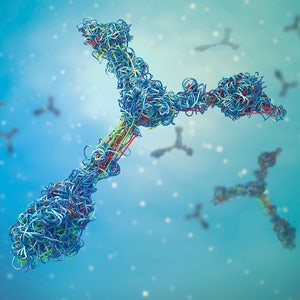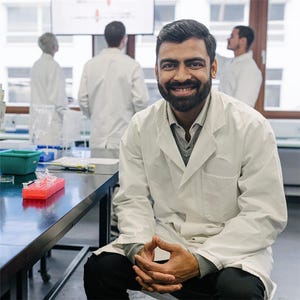TB facts and figures¹
- 1.25M estimated TB deaths
Globally in 2023, TB caused an estimated 1.25 million deaths, including 161,000 people with HIV - 10,800,000 people became sick with TB
In 2023, an estimated 10.8 million people fell ill with TB worldwide, of which 5.95 million were men, 3.55 million were women and 1.3 million were children - 400,000 cases of drug-resistant TB
Globally, an estimated 400,000 people developed multidrug-resistant or rifampicin-resistant TB (MDR/RR-TB) in 2023 - 4-6 months for a course of anti-TB drugs
The average case of active TB disease requires 4 – 6 months of medications
Signs and symptoms
TB bacteria are most commonly found in the lungs. They can, however, spread to other parts of the body. LTBI has no symptoms. Common symptoms of TB disease in the lungs include:
- A bad cough that lasts 3 weeks or longer
- Pain in the chest
- Coughing up blood or sputum (phlegm from deep inside the lungs)
- Weakness or fatigue
- Weight loss
- Loss of appetite
- Chills
- Fever
- Night sweats
Transmission
Exposure to TB occurs when you have spent time with someone who is infected with active TB disease. The bacteria are spread through the air when a person who has active TB sneezes, coughs or speaks. If you think you have been exposed to active TB, you should immediately contact your doctor or the local public health department.
Risk factors
Learning about TB and the risk factors for TB is important, as there are several different factors that can make a person susceptible to TB. However, these risk factors usually fall into two categories:
- Being in close contact with someone who has been recently infected with TB
- Having a medical condition that weakens the immune system
Close proximity
The chances of a person getting infected with TB are higher for people that are in close contact with others who are infected. This includes:
- Family and friends of a person with TB
- People who come from areas of the world with high TB rates
- People in groups with high rates of TB transmission – such as the homeless, injection drug users or a person with HIV
- People who work or reside in a place where the people are at a high-risk for TB – such as hospitals, homeless shelters, correctional facilities or nursing homes
Weak immune system
People who have a weak immune system are at a high-risk for developing active TB. These include:
- Babies and young children
- People with chronic diseases
- People with HIV/AIDS
- Organ transplant recipients
- Cancer patients undergoing chemotherapy
- People receiving certain specialized treatment for autoimmune diseases
Overall, 5-10% of people with latent TB who don’t receive treatment will develop active TB disease at some point in their lives. 1
Testing
There are two categories of commercially available tests to detect TB infection:
1.Tuberculin skin test (TST)
The TST has been used to detect TB infection for over 100 years. It requires an intradermal injection of a small amount of purified protein derivative (PPD), a TB antigen, into the skin. In 48 – 72 hours, the resultant induration is measured. 3
Process:
- Tuberculin is injected into the skin on the lower part of the arm
- Subject returns 48 to 72 hours later to have their test “read” to determine whether there has been a reaction to the tuberculin
Limitations:
- Limited sensitivity, especially in the immunocompromised, young and elderly
Poor specificity; caused by:
Prior bacille Calmette–Guérin (BCG) vaccination
Non-tuberculosis mycobacteria (NTM) infection - Requires 2 visits
Failure to return for second visit = no test result - Subjective result
Administration and interpretation steps are technique-dependent
2.Interferon-gamma release assays (IGRAs)
Three IGRAs currently approved by the FDA for use as an aid in diagnosing TB are: the T-SPOT™.TB test, the multi-tube ELISA test and the Chemiluminescence immunoassay (CLIA). These tests each involve a blood draw, which is then processed by a lab.
Treatment
People with active TB disease must be treated and must take all their medication exactly as directed. If they do not do this, the TB bacteria can become resistant to the drugs used to treat it. A typical course of treatment for active TB lasts from 4 – 9 months.4
It is important to remember that TB is contagious and can be spread by an infected person coughing. For this reason, TB treatment often involves a period of isolation. Therefore, this is also why latent TB should be diagnosed and treated.
People with latent TB infection should be treated to prevent the progression to active TB disease, especially if they have a high risk of reactivation. Latent TB treatment usually involves taking one or more TB medications for several months, with regimens ranging from 3 to 9 months depending on the drugs used. Adherence to the prescribed regimen is crucial to effectively reduce the risk of developing active TB. Unlike active TB, latent TB is not contagious; however, treating it helps reduce the overall spread of TB by preventing future cases of active disease.5
References
- Global tuberculosis report 2024. Geneva: World Health Organization; 2024. Licence: CC BY-NC-SA 3.0 IGO
- CDC – Public Health Matters Blog - Treating TB During an Emergency https://blogs.cdc.gov/publichealthmatters/2021/03/world-tb-day/#:~:text=TB%20disease%20is%20a%20serious,up%20and%20testing%20of%20contacts. Accessed September 2024.
- Huebner R, Schein M, Bass J. The tuberculin skin test. Clin Infect Dis. 1993;968-975.
- CDC – Tuberculosis - Treatment for TB Disease https://www.cdc.gov/tb/topic/treatment/tbdisease.htm#:~:text=RIPE%20regimens%20for%20treating%20TB,to%209%20months%20for%20treatment).&text=This%20is%20the%20preferred%20regimen%20for%20patients%20with%20newly%20diagnosed%20pulmonary%20TB. Accessed September 2024.
- CDC – Tuberculosis - Treatment Regimens for Latent TB Infection https://www.cdc.gov/tb/topic/treatment/ltbi.htm. Accessed September 2024.
Products may not be licensed in accordance with the laws in all countries. Please check with your local representative for availability. Revvity, Inc. does not endorse or make recommendations with respect to research, medication, or treatments. All information presented is for informational purposes only and is not intended as medical advice.






































